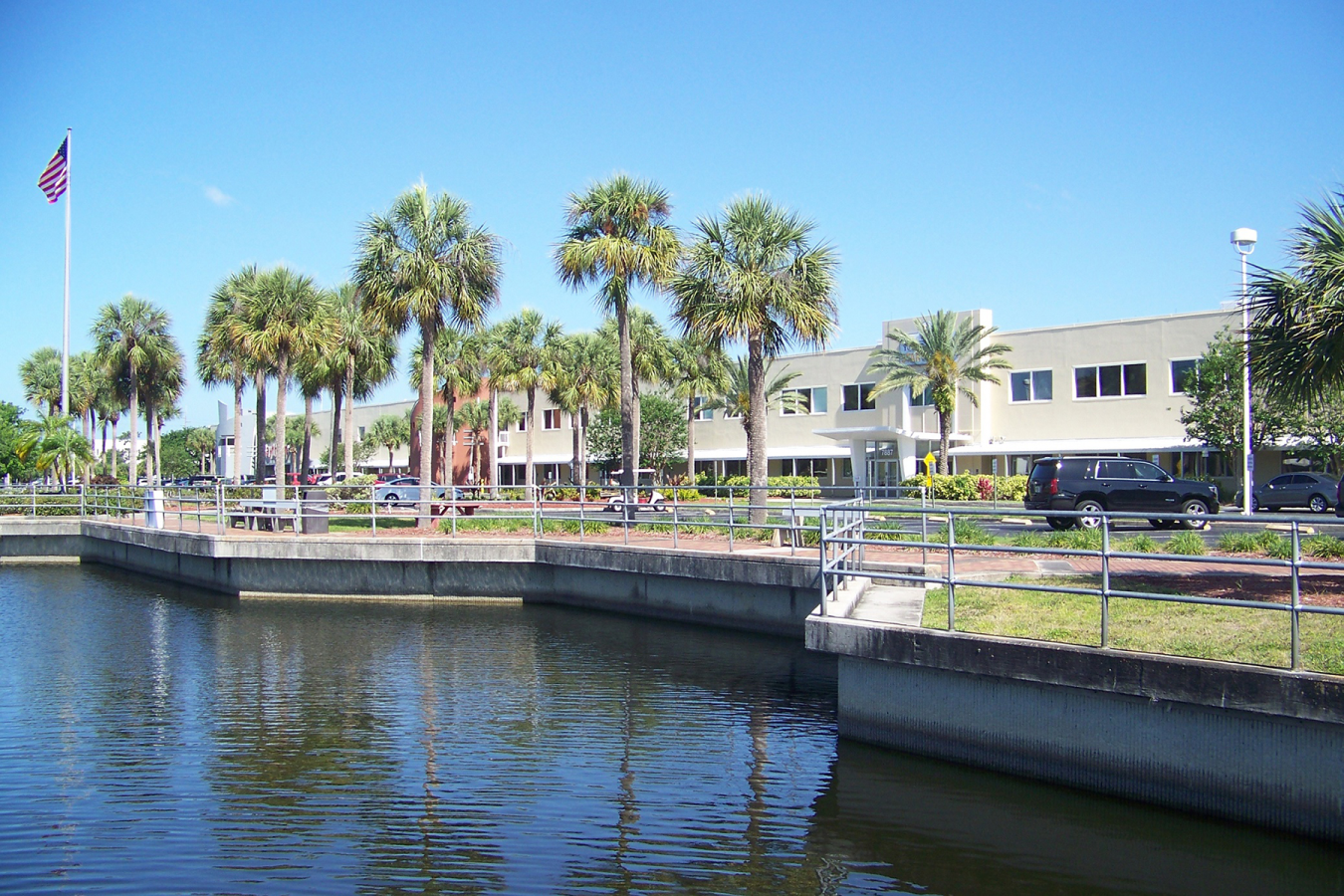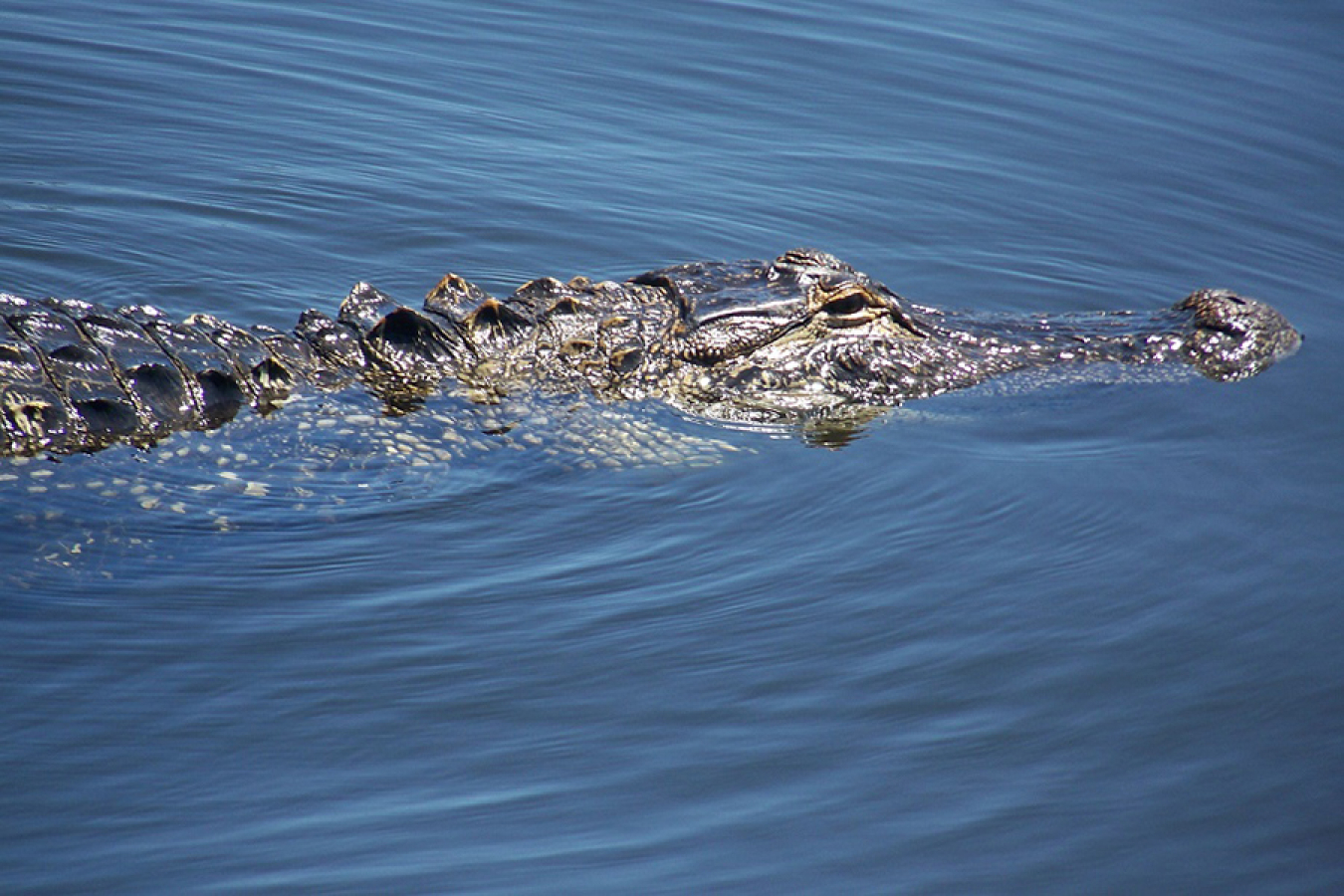When persistent contaminants slowed remediation efforts, LM turned to a nature-based solution that sped up progress.
April 8, 2021The scientists and engineers at the U.S. Department of Energy (DOE) Office of Legacy Management (LM) are environmental professionals who see site closure as a measure of success because it means “mission accomplished.” Case in point: hydrogeologist Julian Caballero, the Legacy Management Strategic Partner (LMSP) site lead for the Pinellas County, Florida, Site.
“I think my crew and I have done a lot of good for the environment over the years,” Caballero said. “But when we were able to reach closure of a significantly impacted portion of the Pinellas site, that felt like the biggest victory yet.”
The portion of land Caballero is referring to was formerly a plant constructed by General Electric in 1956 to manufacture components for the nation’s nuclear weapons program. Known as the 4.5 Acre Site, the area was where disposal drums containing waste resins and solvents were buried, resulting in soil and groundwater contamination.
“It's a very difficult area because the source of the contamination is underneath the buildings and cannot be dug up like at the other LM sites,” said LM Pinellas Site Manager Andy Keim.
When a persistent area of concentrated contamination was cleaned up in 2019, it marked an unconditional closure — a first for LM. An unconditional closure order declares that DOE no longer has any responsibilities for a site and gives the landowner full and unrestricted use of the property. This was a historic milestone for LM, but the real achievement, according to Caballero, was the innovation behind the successful cleanup.

Scientists at LM sites around the country often determine their remediation, or cleanup, strategies based on a site’s geography, size, and level of detectable contaminants. In recent years, these scientists have made enormous progress by identifying innovative methods to remediate environments contaminated by volatile organic compounds (VOCs), which are chemical byproducts associated with building materials, factory supplies, and cleaning or disinfecting products.
Bioremediation does not depend on complicated technology but rather relies on nature. This innovative remediation strategy uses microbes to clean up contaminated soil and groundwater. Microbes are tiny, microscopic organisms, such as bacteria, that thrive in naturally occurring environments. Bioremediation has been in practice for decades but was a technique just recently piloted by the LM teams at the Pinellas site as well as the Mound, Ohio, Site in Miamisburg, where VOCs originating from a solid waste landfill have impacted groundwater.
At both Pinellas and Mound, LM needed to shrink contaminant plumes and intercept any VOCs. It was a challenging task, according to Kristen Holmes, LM’s Education, Communication, History, and Outreach team lead. Traditional groundwater remediation processes, such as “pump and treat,” can take decades to remove the VOCs. “It’s a long, expensive process that inevitably becomes less effective over time, as contaminant concentrations decrease,” Holmes said.
LM considered that bioremediation could support the sites' ecosystems, while providing a nature-based solution.
“Bioremediation is essentially the idea that certain microbes are more likely to decompose certain contaminants. So first you have to test and make sure you have the ones that could eat your contaminant,” explained LMSP hydrogeologist Becky Cato.
Both teams started bioremediation through enhanced environmental attenuation, a technique that uses human intervention to hasten natural environmental breakdown processes. LM identified native microbes — or “bugs” — living at each site to organically break down VOCs. They realized if they could accelerate the bugs’ biodegradation process and ensure more bugs would proliferate at the site, it would eliminate the need for pump and treat or other more invasive methods.
At the Mound site, Cato and her team injected emulsified soybean oil into the ground to create treatment zones. From there, the bugs fed on the oil, proliferated quickly, and simultaneously broke down the contaminants. Then the team conducted a four-year study to determine if the method would be sustainable in the long term.
Once the bioinjections were completed, the results from the study indicated that the treatment zones remained established and appeared to be self-sustaining.
“This project laid the groundwork for DOE to pursue a more economical and potentially faster way to reach cleanup goals for the groundwater in this area,” said Melissa Lutz, LMSP site lead for the Mound site.
Based on the early success, DOE has formally started the process to permanently adopt bioremediation at Mound.
The Pinellas site team’s research had similar findings, demonstrating that enhanced environmental attenuation works even within highly impacted, contaminated sites.
“DOE has used enhanced in situ bioremediation to cost effectively address remaining contaminant mass by accelerating the naturally occurring biodegradation process,” Keim said.
“It’s truly a very simple science and an ideal way to address volatile substances,” Cato added. “In my 15 years as a hydrogeologist, the success at the Mound site certainly ranks as one of my proudest accomplishments.”


